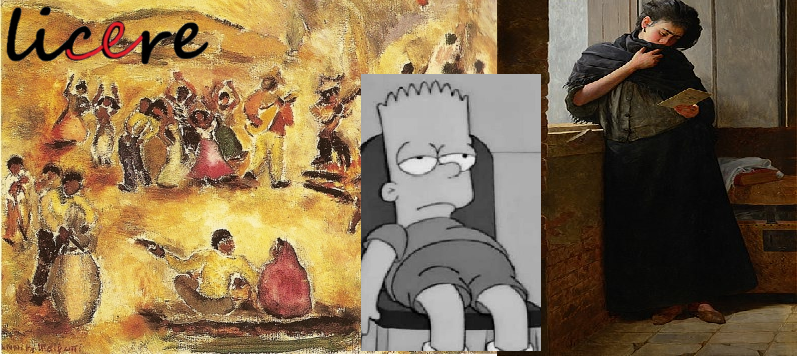Leisure and Quality of Life in the Perception of Individuals with Traumatic Spinal Cord Injury
DOI:
https://doi.org/10.35699/2447-6218.2020.26634Keywords:
Spinal Cord Trauma, Quality of Life, Leisure ActivitiesAbstract
This study aimed to assess the QOL of individuals with spinal cord injury and to identify their leisure activities. An observational analytical study (quali-quantitative) was carried out, with 8 participants. The socio demographic questionnaire and the World Health Organization Quality of Life Instrument - Physical Disabilities (WHOQOL-DIS-PD) were applied, in addition to a semi-structured interview. For data analysis, MAXQDA software and Friedman and Wilcoxon tests (p <0.05) were used. There was statistical significance between the QOL domains of the total sample (p = 0.017), between individuals up to 40 years of age (p = 0.025) and among participants with up to 11 years of injury (p = 0.002). The main leisure activity identified was watching television. Therefore, it could be concluded that individuals with spinal cord injury had a good QOL, despite having restrictions on their leisure activities.
Downloads
References
AMERICAN SPINAL INJURY ASSOCIATION (ASIA). International standarts for neurological classification of spinal cord injury [online]. Atlanta (US): American Spinal Injury Association; 2019. Disponível em: https://asia-spinalinjury.org/wp-content/uploads/2019/04/ASIA-ISCOS-IntlWorksheet_2019.pdf. Acesso em: 13 jul. 19.
BOSWELL-RUYS, C. L.; et al. Impact of respiratory muscle training on respiratory muscle strength, respiratory function and quality of life in individuals with tetraplegia: a randomised clinical trial. Thorax, v.5, p. 279-288, 2020.
BORGES, A. M. F.; et al. Percepção das pessoas com lesão medular sobre a sua condição. Revista Gaúcha de Enfermagem, v. 33, n. 3, p. 119-125, 2012.
BRASIL. Lei nº 13.146, de 06 de julho de 2015. Dispõe sobre o “Estatuto da Pessoa com Deficiência”. Brasília, 2015.
BREDEMEIER, J.; et al. Brazilian version of the Quality of Care Scale: the perspective of people with disabilities. Revista de Saúde Pública, São Paulo, v. 48, n. 4, p. 583-593, 2014.
FONTES, F.; MARTINS, B. S. Deficiência e inclusão social: os percursos da lesão medular em Portugal. Sociologia, Problemas e Práticas, n. 77, p. 153-172, 2015.
FRANÇA, I.S.X.; et al. Percepções de adultos com lesão medular sobre as habilidades para atividades diárias indicadores de saúde à luz da NOC: pesquisa descritiva. Online Braz. J. Nurs. (Online); v. 10, n.2, 2011a.
FRANÇA, I.S.X.; et al. Quality of life of adults with spinal cord injury: a study using the WHOQOL-bref. Revista da Escola de Enfermagem da USP, v. 45, n. 6, p. 1364-1371, 2011b.
FREITAS, A. R. Validação da versão em Libras do instrumento para avaliação da qualidade de vida de pessoas com deficiências físicas e intelectuais (WHOQOL-DIS/Libras). 2016. 159f. Tese (Doutorado em Ciências da Saúde) - Universidade Federal de Goiás, Goiânia, 2016.
GOMES, D.S.; et al. Uso da realidade virtual como estratégia de reabilitação e lazer para pessoas com lesão da medula espinal: uma revisão integrativa. Licere, v.22, n.3, p. 579-602, 2019.Doi: doi.org/10.35699/1981-3171.2019.15350
KAWANISHI, C. Y.; GREGUOL, M. Avaliação da autonomia funcional de adultos com lesão medular. Revista de Terapia Ocupacional da Universidade de São Paulo, v. 25, n. 2, p. 159-166, 2014.
KUBINSKA, Z.; BERGIER, B.; BERGIER, J. Usage of leisure time by disabled males and females from the Lublin Region. Annals of Agricultural and Environmental Medicine, v. 20, n. 2, p. 341 –345, 2013.
KUVALEKAR, K.; et al. Quality of life among persons with physical disability in udupi taluk: A cross sectional study. Journal of family medicine and primary care, v. 4, n. 1, p. 69, 2015.
MINAYO, M. C. S. O Desafio do Conhecimento: pesquisa qualitativa em saúde. 8. ed. São Paulo: HUCITEC, 2004.
NIGHTINGALE, T. E.; et al. Home-based exercise enhances health-related quality of life in persons with spinal cord injury: a randomized controlled trial. Archives of physical medicine and rehabilitation, v. 99, n. 10, p. 1998-2006, 2018.
OLIVEIRA, M.L.V.M.; CARRETTA, R.Y.D. Lazer e participação social na percepção da pessoa com deficiência visual. Licere, v. 23, n. 1, p. 561-581, 2020.Doi: doi.org/10.35699/1981-3171.2020.19802.
PEREIRA, L. S. S.; BRITO, C. M. D.; RODRIGUES, A. A. C. O Lazer da Pessoa com Deficiência Física em Belo Horizonte. Licere, v. 22, n. 4, p. 340-364, 2019. Doi: doi.org/10.35699/1981-3171.2019.16272.
POWER, M. J.; et al. Development of the WHOQOL disabilities module. Quality of Life Research, v. 19, n. 4, p. 571-584, 2010.
REIS, L.P.; COSTA, A.P.; SOUZA, F.N. Análise Comparativa de Pacotes de Software de Análise de Dados Qualitativos. In: ROCHA, Á.; REIS, L. P.; COTA, M. P.; SUÁREZ, O. S.; GONÇALVES, R. (Eds.) Conferência Ibérica de Sistemas e Tecnologias de Informação (p. 998-1003). Gran Canária – Espanha: AISTI – Associação Ibérica de Sistemas e Tecnologias de Informação, 2016.
SERPA, F. S. et al. A especialidade de Alergia e Imunologia Clínica nos diferentes níveis de atenção à saúde no Brasil. Brazilian Journal Allergy and Immunology, v. 2, n. 3, p. 335-343, 2018.
SERRA, M.V.G.B.; FAVA, M.C.; TONELLO, M.G.M. Realidade virtual para pessoas com deficiência: o uso do vídeo game como prática de lazer. Licere, v. 21, n. 4, p. 529-548, 2018.Doi: doi.org/10.35699/1981-3171.2018.1952
Downloads
Published
How to Cite
Issue
Section
License
Copyright (c) 2020 LICERE - Revista do Programa de Pós-graduação Interdisciplinar em Estudos do Lazer

This work is licensed under a Creative Commons Attribution-NonCommercial 4.0 International License.

